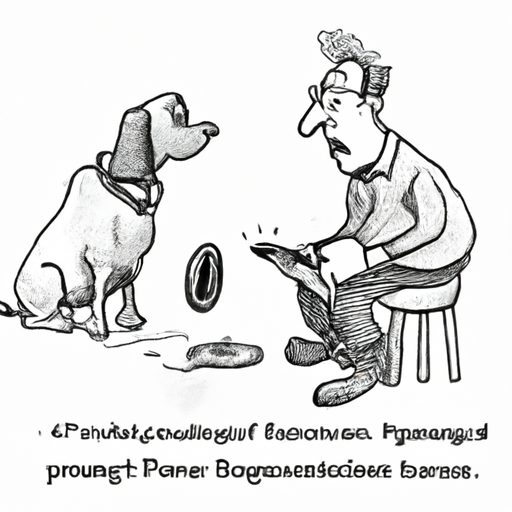Introduction
Hello, dear caregiver. If you’re reading this, you’ve likely noticed something worrying in your dog’s stool. Blood. It’s a sight that can fill any dog parent with apprehension, but don’t panic just yet. This article is here to help you understand the possible reasons, what to do next and when it’s time to seek veterinary attention.
Possible Reasons Your Dog Might Have Blood in Their Stool
There are several reasons why your dog might have blood in their stool. These can range from dietary changes to serious health conditions. Here are a few possible causes:
- Dietary Changes or Indiscretions: Dogs are naturally curious animals and might ingest things they shouldn’t. This could irritate their digestive tract, causing blood in their stool.
- Parasites: Parasites like hookworms, whipworms, and giardia can cause bloody stool.
- Infections: Bacterial or viral infections can lead to bloody stool.
- Anal Gland Issues: Problems with your dog’s anal glands can cause blood in their stool.
- Serious Health Conditions: Conditions like cancer, hemorrhagic gastroenteritis, or parvovirus can cause bloody stool.
What to Do When You Notice Blood in Your Dog’s Stool
Spotting blood in your dog’s stool can be alarming, but it’s essential to stay calm and take the right next steps. Here’s what you should do:
- Examine the Stool: The appearance of the blood can give clues to its source. Bright red blood usually originates from the lower digestive tract, while dark, tarry stools can indicate bleeding in the upper digestive tract.
- Monitor Your Dog’s Behavior: Is your dog eating, drinking, and behaving normally? Or are they showing signs of distress or illness, like lethargy, loss of appetite, or vomiting?
- Contact Your Veterinarian: Regardless of your dog’s behavior, it’s crucial to get in touch with your vet. They can guide you on the next steps and whether immediate attention is needed.
Preventing Blood in Your Dog’s Stool
Prevention is always better than cure. Here are some steps to help prevent blood in your dog’s stool:
- Regular vet visits: Regular check-ups can help identify and address health issues early on.
- Proper diet: Feeding your dog a balanced, high-quality diet can help maintain their digestive health.
- Regular deworming: Regularly deworming your dog can help prevent parasitic infections.
- Avoid dietary indiscretions: Keep an eye on what your dog is eating. Make sure they’re not ingesting anything that could harm them.
FAQs
Q1: Should I take my dog to the vet immediately if I see blood in their stool?
A: It’s essential to contact your vet as soon as you notice blood in your dog’s stool. They can guide you on whether immediate attention is needed based on your dog’s symptoms and behavior.
Q2: Can diet cause blood in dog stool?
A: Yes, sudden dietary changes or your dog eating something they shouldn’t can lead to bloody stool.
Q3: Can stress cause blood in dog stool?
A: Yes, stress can cause colitis which can lead to bloody stool in dogs.
Q4: How is the cause of blood in dog stool diagnosed?
A: Your vet may use a combination of physical examination, stool analysis, blood tests, ultrasound, or endoscopy to determine the cause.
Remember, you’re not alone in this. Seeing blood in your dog’s stool can be scary, but with the right information and action, you can help your furry friend navigate this situation. Always consult with your vet for any health concerns you have regarding your pet.



